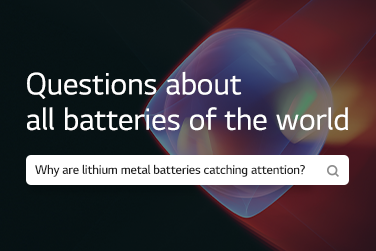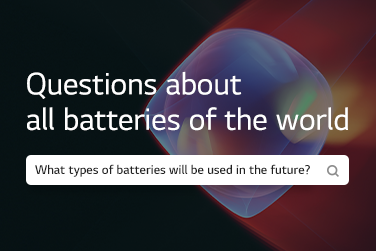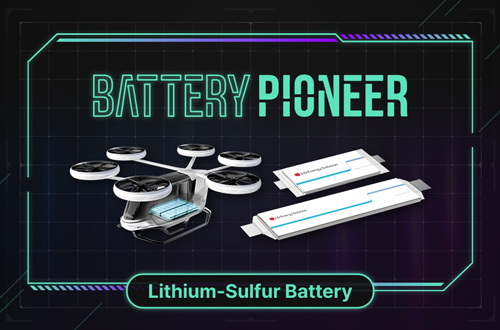Lithium-ion batteries are classified by what material the cathode contains. They include the ternary batteries and quaternary batteries that have lithium cobalt oxide in the cathode and the LFP batteries that have iron phosphate (LiFePO₄) instead of cobalt in the cathode. The LFP batteries are in the limelight in the market these days. We will find out the reason and what LFP battery businesses LG Energy Solution is engaged in.
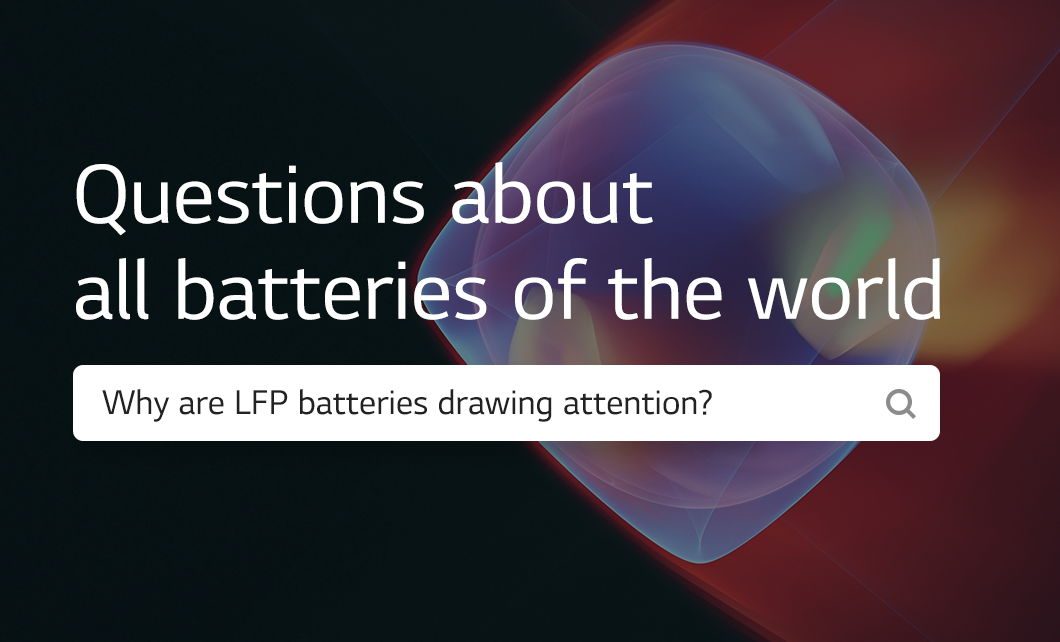
Q. Why are LFP batteries drawing attention?
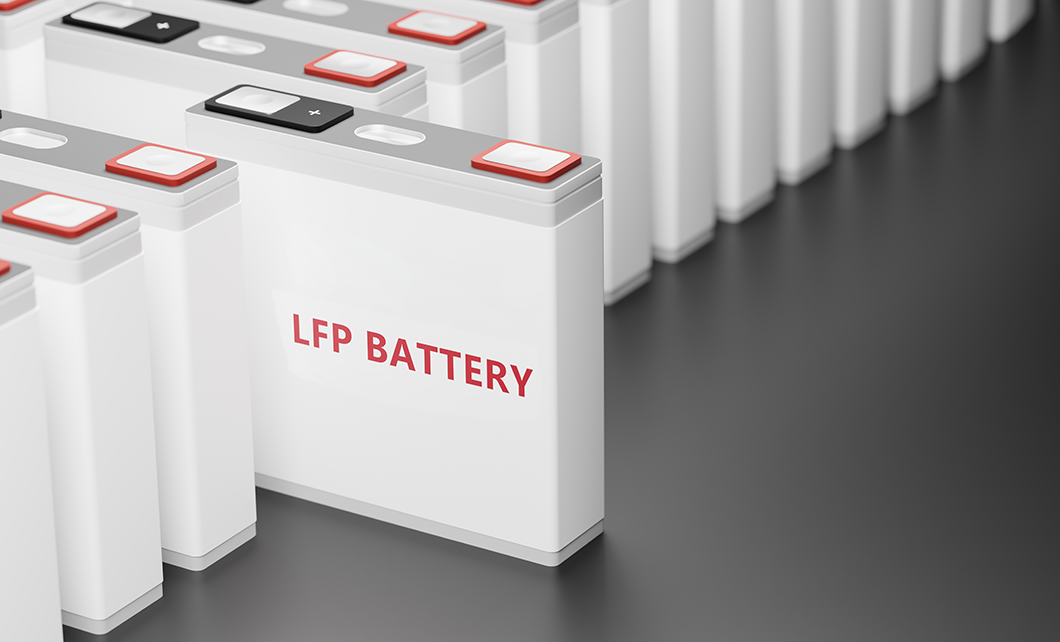
LFP batteries are affordable and safe. The raw material expenses are lower since the more affordable iron phosphate replaced the pricey cobalt. Also, they are stable because they have the stable hexahedral olivine structure among the three types of cathode structures. Also, they can reduce risks of accidents that can occur from overcharging or over-discharging and offer longer battery life as they help battery cells degrade less.
Despite such advantages, LFP batteries were undervalued because when mounted on an EV, their low energy density shortened the driving range of the vehicle. However, the prices of key battery ingredients such as nickel and cobalt soared, and LFP batteries that do not require such minerals won back the attention. Their performance also improved. As a result, the share of LFP batteries used for EVs surged from 17% in 2020 to 36% in 2022.
Q. How is the global LFP battery market?
How are the LFP battery markets of each country changing?
In China, the market showed rapid growth driven mainly by domestic consumption. Accordingly, demand for LFP batteries shot up so much that more than half of EVs in China are equipped with LFP batteries.
The North American LFP battery market is also expected to grow further. Bloomberg NEF, a research firm, forecast that LFP batteries would be in excess demand until 2030 and reach 40% of EV battery demand in the U.S. Also, one of the U.S. carmakers suggested it could adopt LFP batteries for many of its EV models.
South Korea is not sparing support for its goal to be a leader in the LFP battery market. The government is determined to develop the world’s best LFP battery, investing KRW 23.3 billion with the private sector for the coming 4 years. The project has largely two purposes: producing the cathode materials of LFP batteries domestically and developing cell manufacturing technology for LFP batteries with the highest energy density in the world.
Q. What LFP battery businesses are LG Energy Solution engaged in?
LG Energy Solution identified the importance of LFP batteries and has launched projects in many areas.
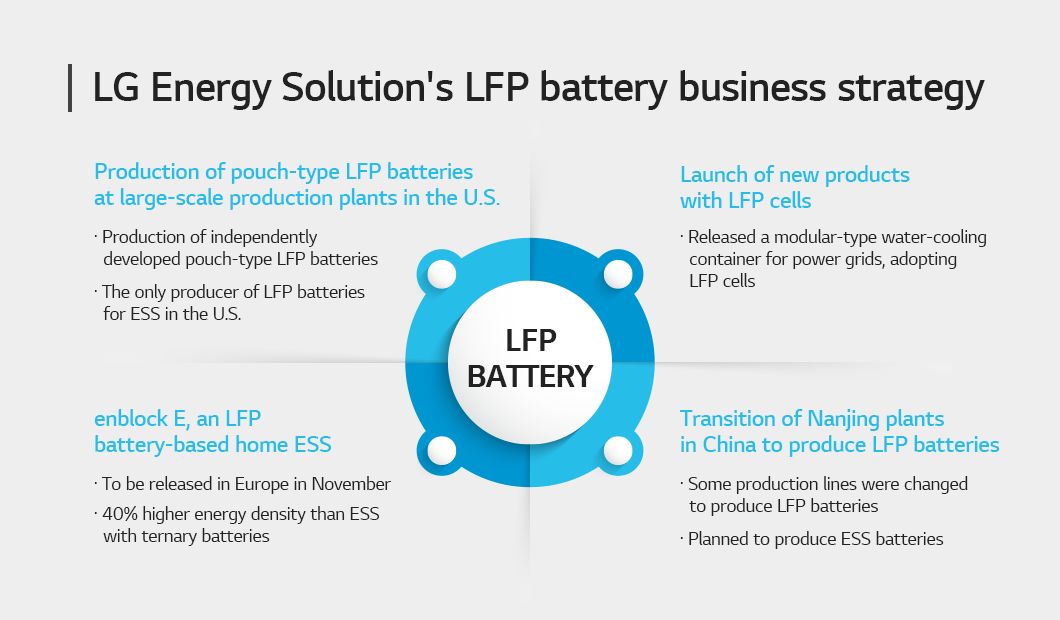
It is going to produce pouch-type LFP batteries in large production plants in the U.S.
LG Energy Solution is implementing many strategies to dominate the U.S. market. In particular, the battery maker is going to build a 16 GWh ESS battery production plant, investing a total of KRW 3 trillion in Arizona, U.S. The plan is to start building the plant in 2023 and mass-producing the pouch-type LFP batteries independently developed by LG Energy Solution from 2026. The company expects it will come to have the only ESS-dedicated LFP battery production plant in the country and be able to secure technological competitiveness.
The battery maker also developed new products adopting LFP cells.
It unveiled a modular-type water-cooling container for power grids, adopting 4.76 MWh LFP cells at RE+ 2023 conference held from September 11 to 14 in 2023 in Las Vegas, U.S. This product has a longer life and allows users to cut maintenance and repair expenses. The container offers the ideal energy since it comes in the modular type and users can optimize it for the environments and regulations of their residential areas.
Also, LG Energy Solution released an LFP battery-based home ESS in November of 2023 in the European battery market.
Among the enblock products, enblock E, the home ESS for the European market, uses LFP batteries. This product has 40% higher energy density than the ESS equipped with ternary batteries such as NCM. Indeed, enblock E proves that LG Energy Solution’s technological prowess and mass-production capability regarding LFP batteries.
Lastly, a part of the production lines in Nanjing, China transitioned to LFP batteries in 2023, and through which the company will start mass-producing LFP battery-based ESS.
Expanding its product portfolio to include LFP batteries, LG Energy Solution is pursuing innovation as a global battery maker. You can look forward to its future LFP battery strategies.
